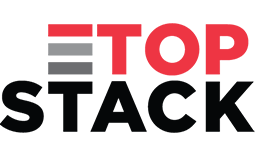Learn How Goal Setting Affects Your Brain

There are dozens of articles on goal setting as a tool for getting ahead in business. Goal setters seem more organized and achieve more in the workplace. Employers look for the goal-setting motivated employee. Goal setters seem to have it together more than the rest of us. But did you know there is scientific research that shows that goal-setting improves higher brain function?
Here’s what the science says about goal setting and your brain.
Setting Goals Rewires Your Brain’s Effectiveness
Goal setting is powerful. It can motivate people to build for the future and accomplish tasks they might not have thought they could. What’s puzzling is why some people seem to drift through live aimlessly and why others set and achieve goals. Top-level achievers in all industries set goals that they often achieve. How are they able to pull it all off?
A study in Behavioral and Cognitive Neuroscience Reviews proves what we’ve known all along; people that set goals are generally more together than everyone else. That’s because goal setting rewires our brains to make the component parts work more effectively. The study showed that when you set a goal, multiple parts of the brain are suddenly engaged:
- The amygdala, which is the brain’s emotional center, evaluates the goal for how important it is to you.
- The frontal lobe, which is the brain’s logical problem-solving portion, defines the goal and digests it.
- Both the amygdala and the frontal lobe then work together to push you toward the completion of the goal.
As the brain moves you into situations to help you achieve your goal, the organ changes in structure to help you optimize behaviors and tasks.
Another study, this time with multiple sclerosis patients from the University of Texas, showed that MS symptoms lessened when goals were set and achieved. The symptoms of MS included severe fatigue, speech impairment, loss of muscular coordination, and numbness. These symptoms were lessened when patients set goals.
Inc. reported on another study, this time in the Journal of Applied Psychology that found people who established an ambitious goal usually achieved it. People who created a simpler goal failed to achieve it. The study suggested ambitious goals stimulate the brain more, motivating the person to accomplish the impossible. The study found the higher the goal, the more likely you would achieve it.
The Psychological Bulletin said 90% of the studies showed that more challenging goals led to higher performance. More manageable goals, “do your best” goals, or no goals did not have the same effect on the brain, or the person’s ability to achieve their goals. The article reported, “Goal setting is most likely to improve task performance when the goals are specific and sufficiently challenging.
Ironically, it should be noted that these studies suggested the brain rewiring must occur when the individual sets the goal. The brain doesn’t change when your boss or coworker sets the goal for you. Inc. reports, “All a leader can do is have ambitious, challenging goals for themselves in the hope it will inspire others to do the same.”
If you need assistance with your career goals, contact the staffing professionals at Top Stack today.

















